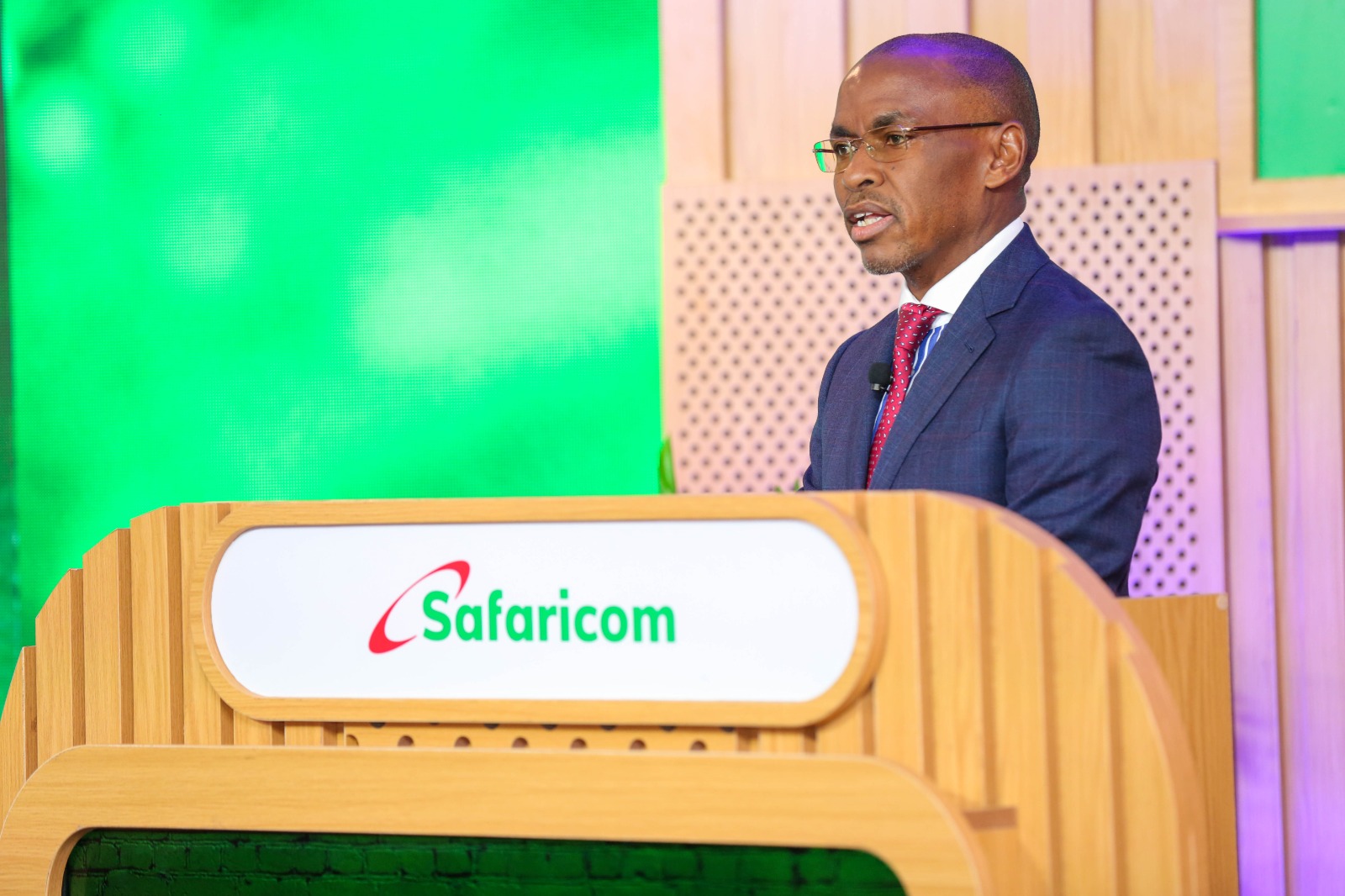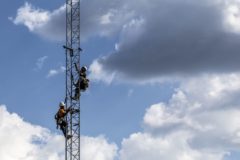It has been over seven months since mobile network operator Safaricom officially launched shop in Ethiopia. There are clear signs the company has grown, having onboarded a little more than 3 million customers on its networks. Safaricom also has plans to launch mobile money services in the country, M-PESA. However, what other performance metrics has the mobile operator achieved so far?
Safaricom has been interested in entering the Ethiopian market for some time, and the venture was officially announced in October 2022. The commercial launch of Safaricom Ethiopia was a major step toward expanding its market beyond Kenya, with an international consortium including Vodafone Group, Vodacom Group, Sumitomo Corporation, and British International Investment. This partnership cost $850 million.
Seven months later, Safaricom has amassed millions of monthly active users with plans to expand in a market that is virgin territory due to state-owned Ethio Telecoms being the only competition.
“During the year, we launched commercial operations for Safaricom Telecommunications Ethiopia Plc (STE) on October 6, 2022, post the phased city-by-city customer network pilots that commenced on August 29, 2022. We are optimistic about the transformative opportunities it presents for us. Our focus has been to accelerate the pace of the rollout, and we have now covered 22 large and medium-sized cities representing a population coverage of 22%. Plans are underway to roll out to the remaining cities, i.e., Assosa, Nekemte and Mekele,” Safaricom CEO Peter Ndegwa said in an Investor Briefing for 2022/2023 FY.
Ethiopia by numbers
Ethiopia is a big country with a population of around 120 million people, 78 percent of whom live in rural areas. These people are currently being served by two telcos, which is a low number considering other African nations have more than 5 carriers attending to an even smaller number of people.
READ MORE: As Safaricom seeks to conquer Ethiopia, its profits are taking a hit
Nonetheless, Safaricom Ethiopia continues to explore ways of levering this market. For instance, over 63 million people are over 18, while 13.5 million are between 14 and 18 years old. This is a notable market opportunity it can take advantage of, which can even be more lucrative. Kenya has 50 million people, according to the last census.
With plans to launch M-PESA services in Q2, Safaricom Ethiopia is aware of the opportunity, as 35 percent of the Ethiopian population is financially included.
Mobile penetration is, however, still low at 57 percent. Mobile penetration is the percentage of a population that owns or has access to a mobile device.
The state has 10,000 large enterprises, as well as 240 000 SMEs. These organisations will likely tap into Safaricom Ethiopia’s products, including enterprise services such as the cloud, IoT, and more. There are plans to keep these projects rolling because the carrier has already built two data centres. The first facility cost $100 million.
Telco-specific numbers
According to an Investor briefing report by Safaricom that was revealed this week, Safaricom continued to fast-track its service offerings in Ethiopia.
For instance, the operator has equipped over 5,000 acquisition locations with digital biometrics supported by electronic know-your-customer (e-KYC) back-office verification processes to streamline customer onboarding.
The corporation boasts that the registration process takes less than 10 minutes per customer and has rolled out 4G/3G/2G sites ready for 5G.
Safaricom Ethiopia has 114 exclusive branded distributor shops offering its services and serving customers in 5 different languages.
It also serves 90% of customers within 2 minutes, and they have over 90% brand awareness in launched cities, with more than 30% brand consideration.
Based on the population dynamics, Safaricom is also selling itself as a youthful brand with internet services. Its acquisition offer is focused on data, prepay network calling, SMS, mobile data, and home 4G Wi-Fi offerings.
Airtime purchase is available through key bank digital channels, and it offers personalised offerings through its customer value management (CVM) system.
The telco also offers a range of branded devices, including 2G and 4G feature phones, 4G smartphones, MiFi’s, and routers.
Performance numbers
According to 2022/2023 FY results, Safaricom Ethiopia has over 3 million customers. About 2.1 million use the carrier actively, with Safaricom aiming for 10 million by 2024.
The customers generated KES 562.4 million (over $4 million) in revenue. 63% of the revenue was from mobile data, 24% from voice, and the rest from messaging and mobile incoming.
However, the Ethiopia investment did make a dent in Safaricom Group’s overall financial performance.
“Safaricom increased its Group Service Revenue by 5.2% to KES 295.7 billion while the Group net income excluding minority interest declined by 10.6% attributable to expected start-up costs and investment in rolling out operations in Ethiopia within the year,” said Safaricom (Kenya) in a statement.
Nevertheless, customers reportedly use an average of 1.5GB of data and 55.4 minutes of voice.
Safaricom has sold 106.9K mobile devices since launching, generating revenue from KES 676.6 million ($5 million).
It has installed 1272 network sites, planning to double them by next year.
M-PESA goes to Ethiopia
As reported earlier, Safaricom is expanding M-PESA services to Ethiopia. It is Safaricom Kenya’s biggest earner, constituting over 39 percent of service revenue.
For instance, M-PESA revenue grew 8.8% to KES 117.19 billion ($855 million), supported by 16.2% YoY growth in transactions per active user. One-month active M-PESA users jumped 5.2% to 32.11 million. The product serves consumers and businesses, with 76.4% of total registered M-PESA users active in the past month.
While it was known that Ethiopian financial authorities would grant the telco the mobile money license, the development was not without hurdles because the state had initially reported it would not allow the product into the country.
According to Safaricom, the licence costs $150 million.
It is now prepping the technical viability of M-PESA. The service will go live before the end of June and will compete alongside Telebirr, which is offered by Ethio Telecoms. Telebirr is complemented with a super app, as does the M-PESA app. It remains to be seen how these services will manage to stage rivalry, considering M-PESA will be second to Telebirr but has remained unmatched in Kenya.
Ethiopia’s operating environment
Regarding Ethiopia’s economic situation, the GDP growth for 2023 is predicted to be around 6.2%, which is lower than the average growth rate of 9.1% between 2011 to 2020.
The market has liquidity pressure, leading to a widening gap between the official and parallel market exchange rates. Inflation is also rising rapidly, reaching 34.2% as of March 2023. As for the global impact, the ongoing war in Ukraine may have some effects.
That’s not all, since there are some developments in Ethiopia’s telecommunications and financial sectors. In February 2023, it was revealed that 45% of state-owned Ethio Telecom would be privatised.
The nation’s ICT regulator, the Ethiopian Communication Authority (ECA), is expected to issue an Expression of Interest (EOI) for a second private telecom company to enter the market. The government is also keen on liberalising other industries, including opening the mobile financial services and banking sectors. This means that soon, more telcos will launch their services there.
All the said pitfalls and progresses are likely shaping how Safaricom Ethiopia will tackle the market over the next months as it looks forward to turning a profit.
Ndegwa says he is optimistic about the future, although he may be under internal pressure to turn things around.
“The business is stable and regained a strong positive momentum in the second half of the year. Looking into the future, we passionately believe that our business is well-positioned to support our customers and provide technology solutions as we transition into a purpose-led technology organisation in line with our 5 YR strategy,” Peter Ndegwa added.






















